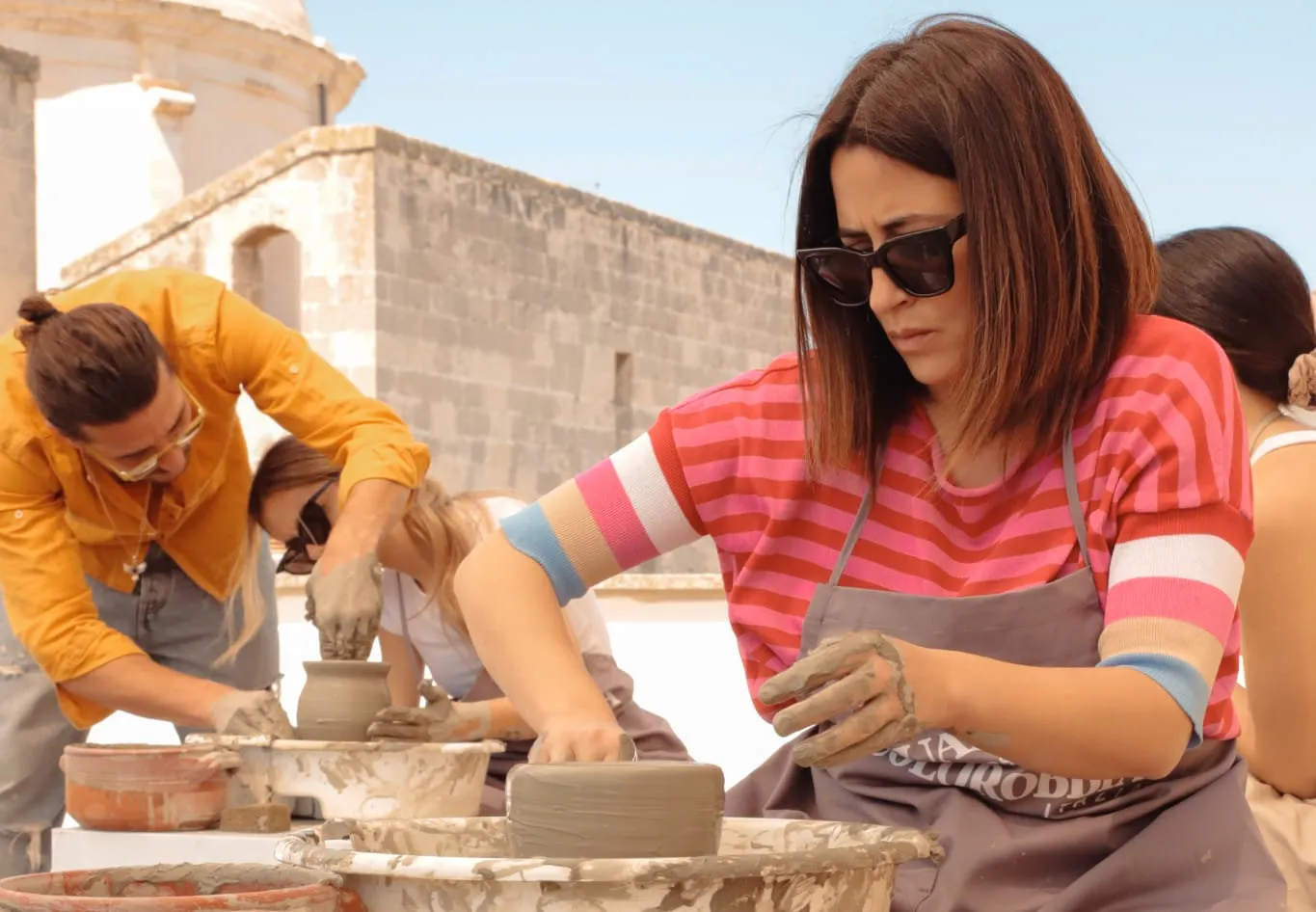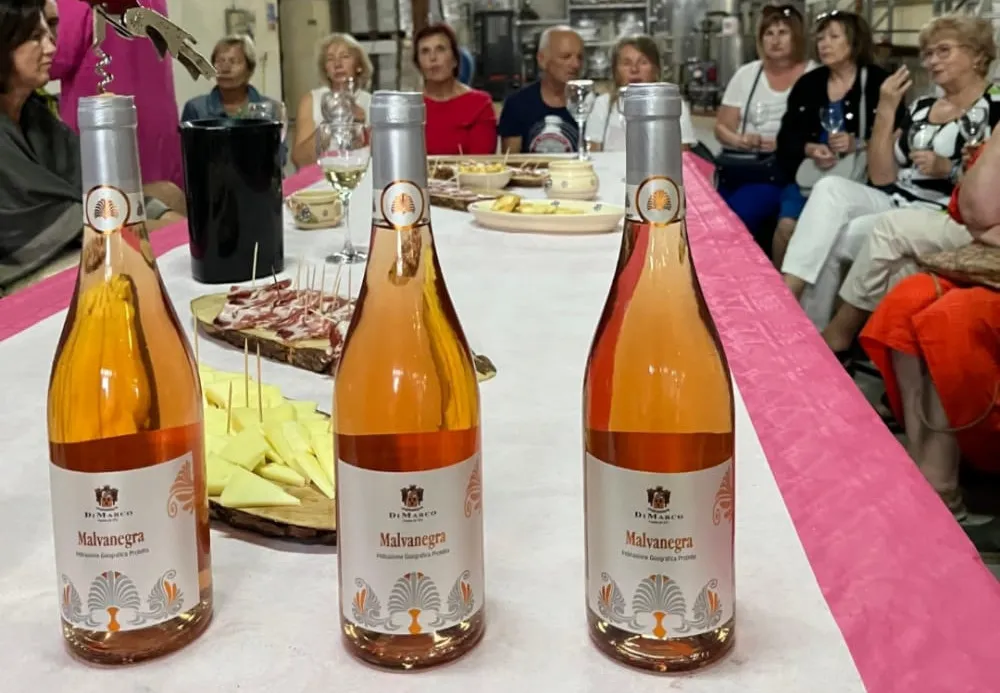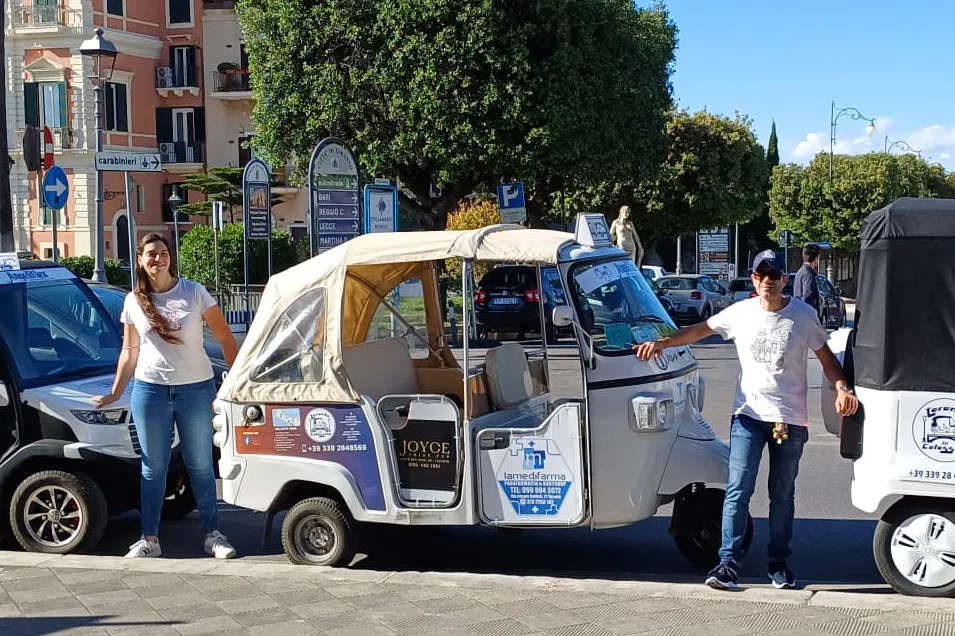Also known as the "City of the Two Seas" for its position between the Mar Grande and the Mar Piccolo, Taranto offers a unique experience to visitors thanks to its rich historical heritage and natural wonders.
What to See in Taranto?
If you are on vacation in Apulia and want to visit Taranto, the best things to see are:
- Aragonese Castle
- The Swinging Bridge of Taranto
- Temple of Poseidon
- Cathedral of San Cataldo
- Church of San Domenico Maggiore
- National Archaeological Museum of Taranto (MArTA)
- Spartan Museum of Taranto
- Taranto Vecchia
- Church of San Pasquale
- Church of San Michele Archangel
- Ponte di Pietra (Bridge of San Egidio from Taranto)
- Mar Piccolo and Church of Fatima
- Oasis La Vela
Things to Do in Taranto
What to do nearby
Aragonese Castle
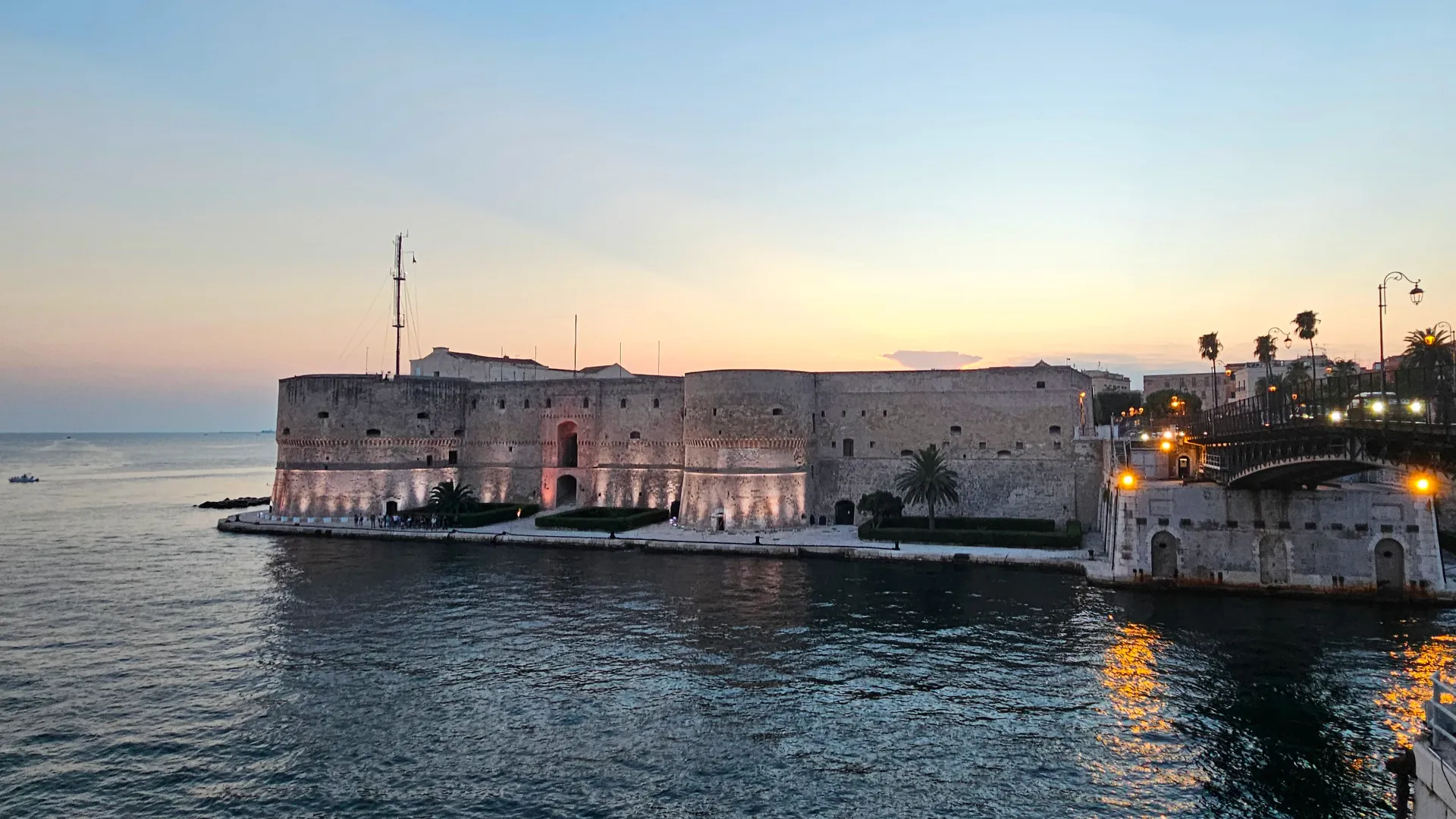
The Aragonese Castle of Taranto, also known as Castel Sant'Angelo, is one of the most imposing and historically significant structures in the city.
Its construction began in 1481, under the reign of Ferdinand II of Aragon, with the intent of strengthening the city's defenses against the incursions of the Turks and other maritime powers of the Mediterranean.
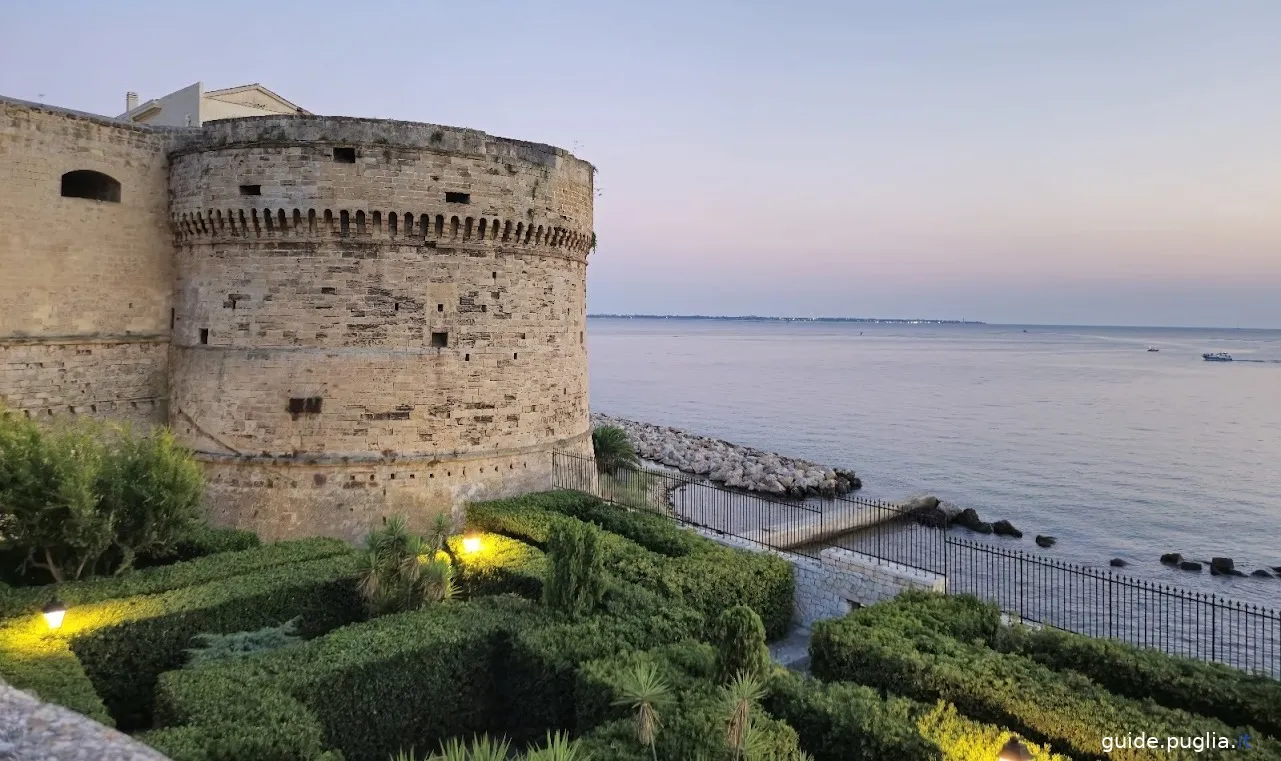
Visits to the Aragonese Castle
The Aragonese Castle is open to the public and offers guided tours that allow exploring its various sections and learning more about its fascinating history.
During guided tours, visitors can explore the towers, walls, inner courtyards, and prisons, as well as enjoy splendid panoramic views of the Ionian Sea and the city of Taranto.
Visit Information
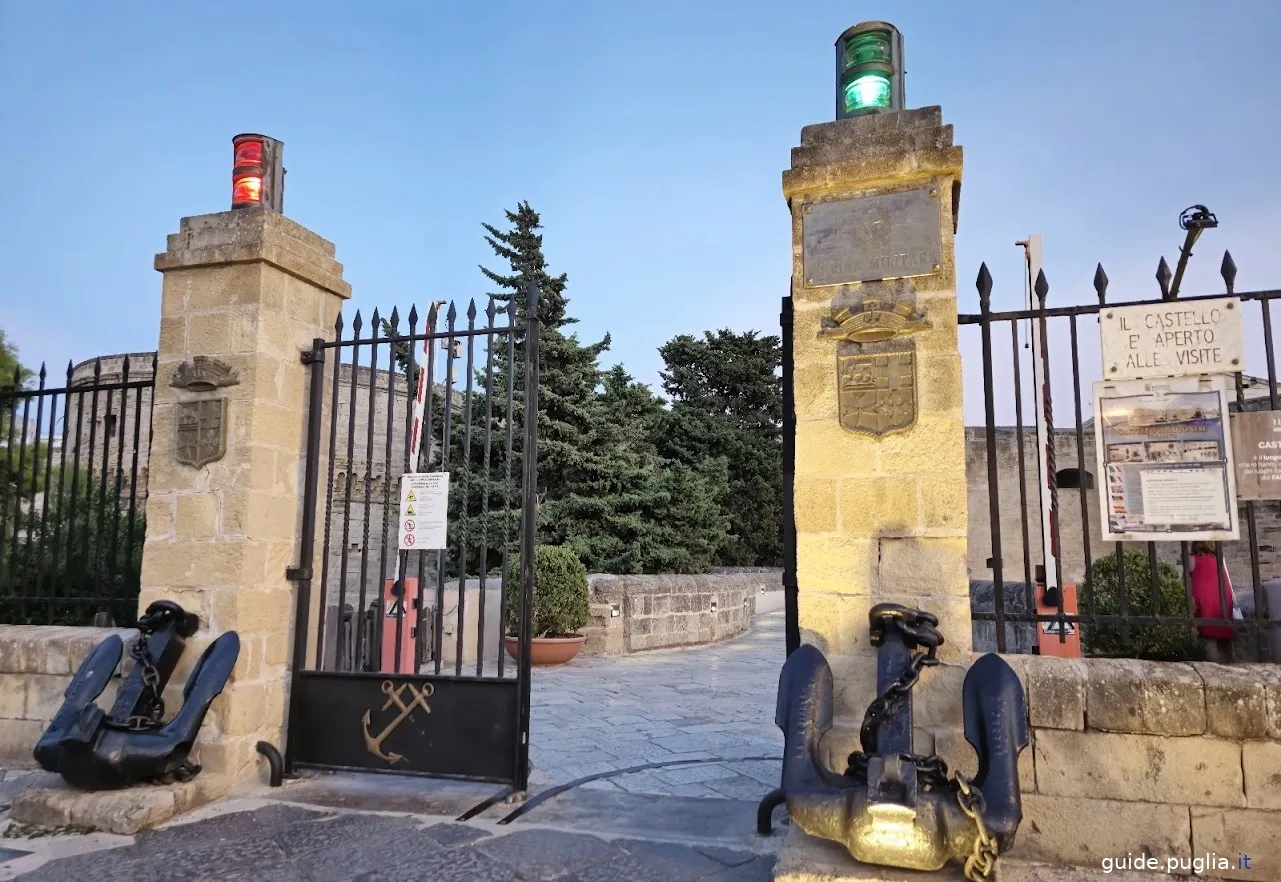
- Opening hours: The castle is generally open all year round. Opening hours may vary, so it is advisable to check the official website or contact the castle before visiting.
- Tickets: Entry to the castle is free, but guided tours may require advance reservation. Guided tours are available in Italian and sometimes in other languages.
- Duration of the visit: Guided tours last about an hour and a half.
- Accessibility: The castle is partially accessible to people with mobility disabilities, but some areas may be difficult to reach due to stairs and narrow passages.

The Swinging Bridge of Taranto
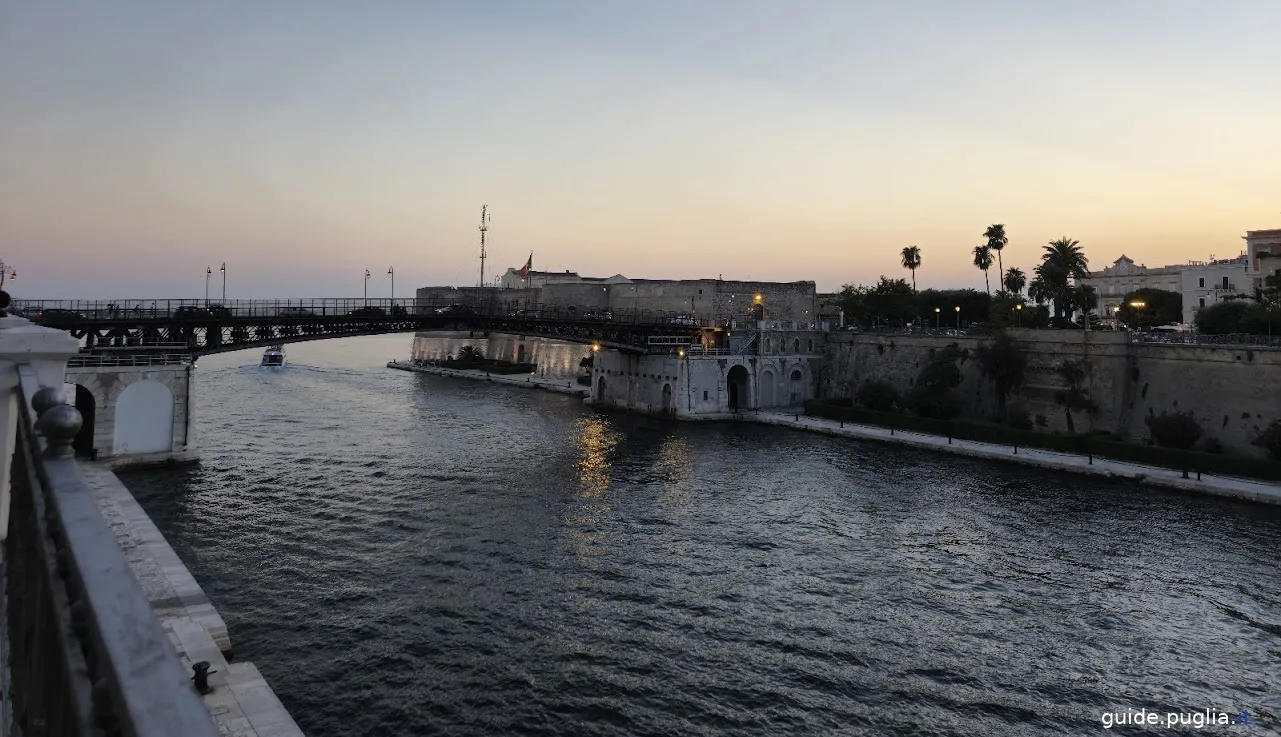
The Swinging Bridge of Taranto, officially called the Ponte San Francesco di Paola, is one of the modern symbols of the city.
Inaugurated in 1887, the bridge was designed to connect the island of the Borgo Antico with the mainland of the Borgo Nuovo, separated by the navigable canal that joins the Mar Grande to the Mar Piccolo.
The Swinging Bridge is an extraordinary work of engineering: it is a bascule bridge that can rotate 90 degrees to allow the passage of military and merchant ships. The original bridge, built of iron, was replaced by a steel structure in the 1950s, improving its functionality and safety.
Visits to the Swinging Bridge
The bridge is open to pedestrian and vehicle traffic, but the most fascinating moments are those when the bridge is opened for the passage of ships.
Opening hours vary depending on the needs of the Navy, which manages the bridge.
Temple of Poseidon
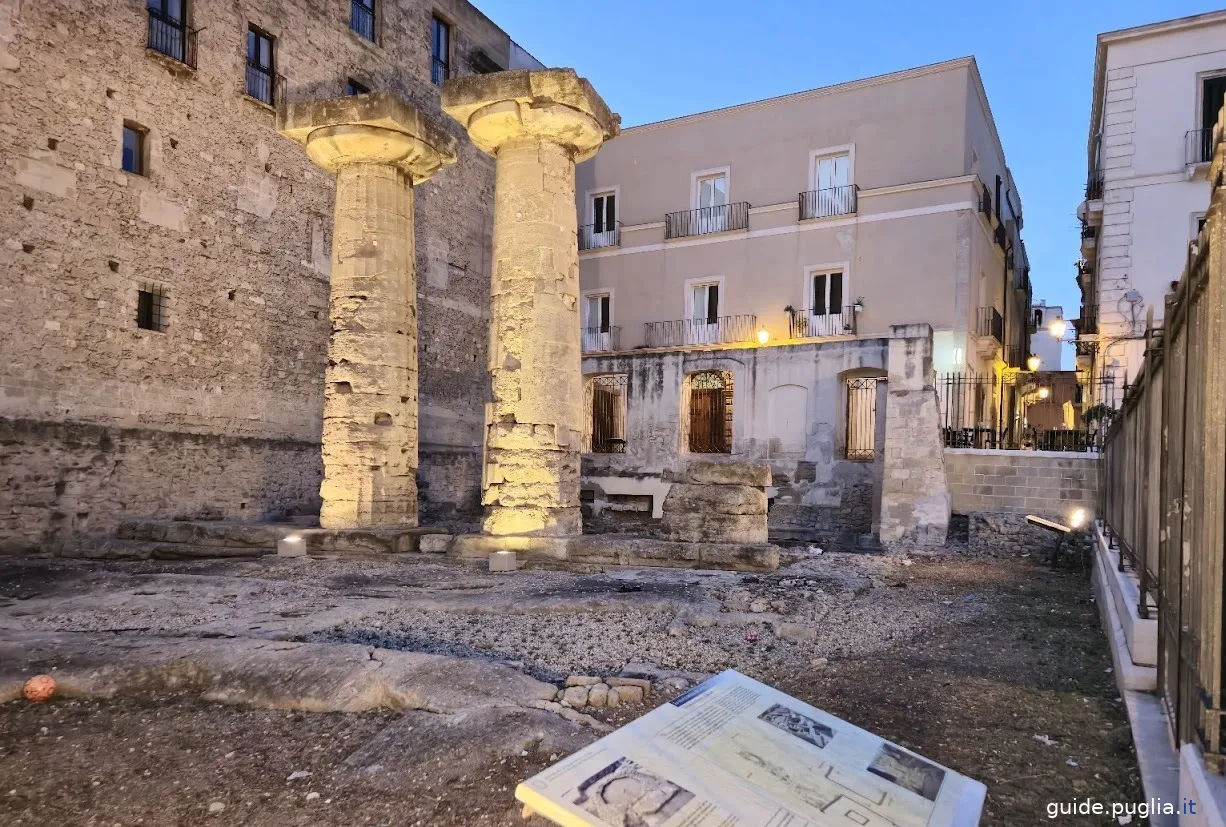
The Temple of Poseidon, also known as the Doric Temple, is one of the oldest and most important archaeological sites in Taranto. Dating back to the 6th century BC, this temple is a significant testimony to the Greek presence in the region.
It was built by the Spartan colonists who founded the city of Taranto, known in Greek as Taras. Dedicated to Poseidon, the god of the sea, the temple reflects the importance of the sea to the city, which was a major port and maritime center in antiquity.
Visit Information:
- Opening hours: The site of the Temple of Poseidon is generally accessible all year round. As it is not a fenced area, it can be visited at any time of the day.
- Tickets: Entry to the site is free.
- Duration of the visit: The visit to the Temple of Poseidon can last from 15 to 30 minutes, depending on the visitor's interest in archaeology and ancient history.
- Accessibility: The site is easily accessible on foot, located in the historic center of Taranto, close to other places of interest.
Cathedral of San Cataldo
The Cathedral of San Cataldo is the main church of Taranto and one of the most important places of worship in the city.
Founded in the 11th century, the cathedral is dedicated to San Cataldo, the patron saint of Taranto. Its construction began in the Romanesque style under Archbishop Drogone, and was completed in 1071.
Over the centuries, the cathedral has undergone several modifications and restorations, especially during the Baroque period.
Visits to the Cathedral
- Opening hours: The cathedral is open to the public every day. Hours may vary, so it is advisable to check on-site or contact the parish for updated information.
- Tickets: Entry is free, but donations are welcome for the maintenance of the church.
- Duration of the visit: The visit can last from 30 minutes to an hour, depending on interest in artistic and architectural details.
- Accessibility: The Cathedral is accessible to people with mobility disabilities.
Church of San Domenico Maggiore
The Church of San Domenico Maggiore is one of the oldest religious buildings in Taranto, founded in the 13th century.
The church was built by the Dominican friars and has undergone various interventions over the centuries, which have altered its original appearance.
Visits to the Church
- Opening hours: The church is open during worship hours and for tourist visits. It is advisable to check specific hours with the parish.
- Tickets: Entry is free, but donations are appreciated.
- Duration of the visit: The visit can last from 20 to 45 minutes.
- Accessibility: The church is partially accessible, with some areas more difficult to reach for people with disabilities.
National Archaeological Museum of Taranto (MARTA)
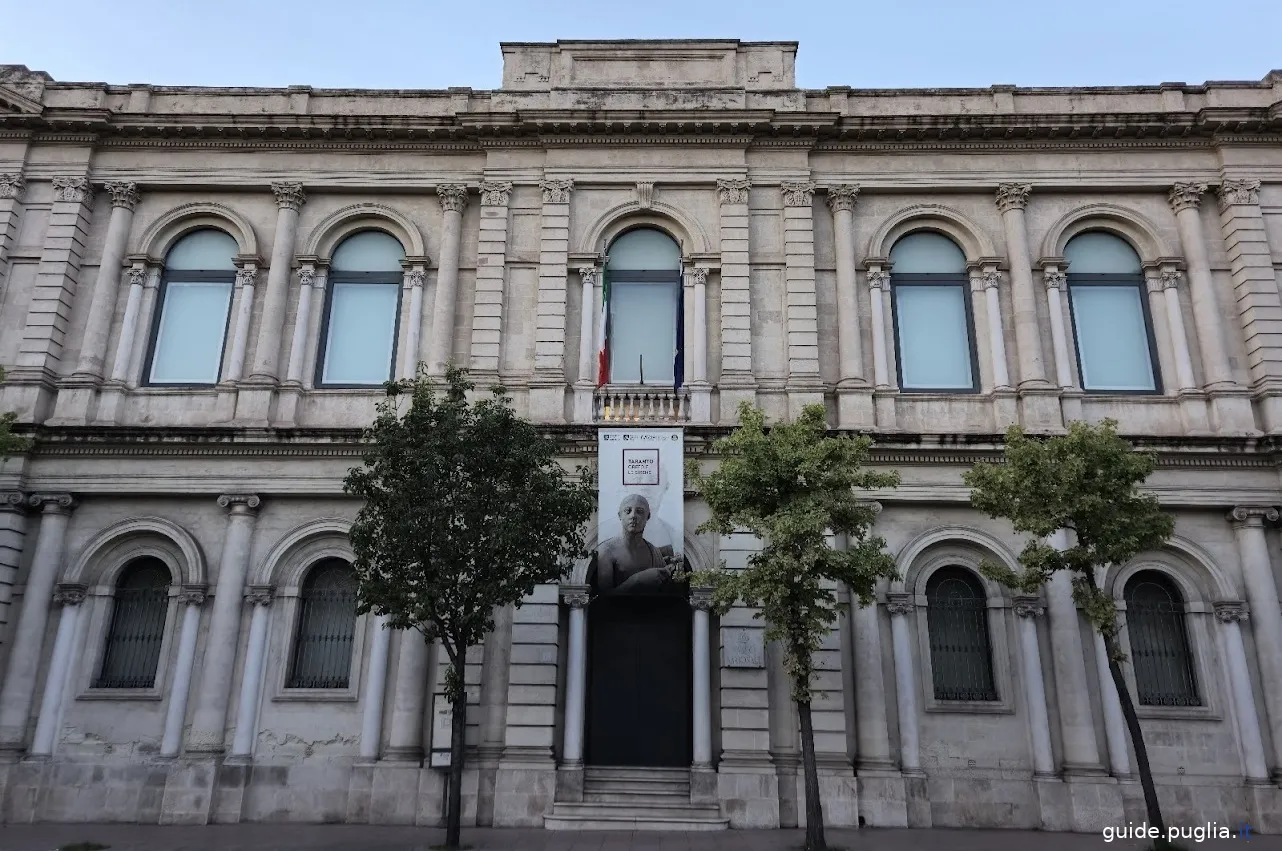
The National Archaeological Museum of Taranto, known as MARTA, is one of the most important museums in Italy for its extensive collection of artifacts from Magna Graecia.
Founded in 1887, the museum is housed in the ancient convent of San Pasquale di Baylón, which has been expanded and renovated to accommodate the archaeological collections.
Visits to the Museum
- Opening Hours: Open from Tuesday to Sunday, from 8:30 AM to 7:30 PM. Closed on Mondays.
- Tickets: Entrance fees vary, with reductions for students, groups, and seniors.
- Visit Duration: The visit can last from 1 to 3 hours, depending on interest in the collections.
- Accessibility: The museum is fully accessible to people with mobility disabilities.
Spartan Museum of Taranto
The Spartan Museum of Taranto, dedicated to Spartan history and culture, is a relatively new museum that offers insights into the Greek foundation of Taranto by the Spartans. The museum is located in the heart of the old city and provides an overview of the life of the ancient settlers.
The museum displays archaeological finds, reconstructions, and informational panels that illustrate the history of the Spartans in Taranto. Among the most interesting items are weapons, everyday tools, and religious artifacts.
Museum Visits
- Opening Hours: Open daily with variable hours. It is advisable to check the official website or contact the museum for updated information.
- Tickets: Entry is generally paid, with discounts for groups and school parties.
- Visit Duration: The visit can last from 1 to 2 hours.
- Accessibility: The museum is partially accessible, with some areas potentially difficult for people with mobility disabilities.
What to do nearby
Taranto Vecchia
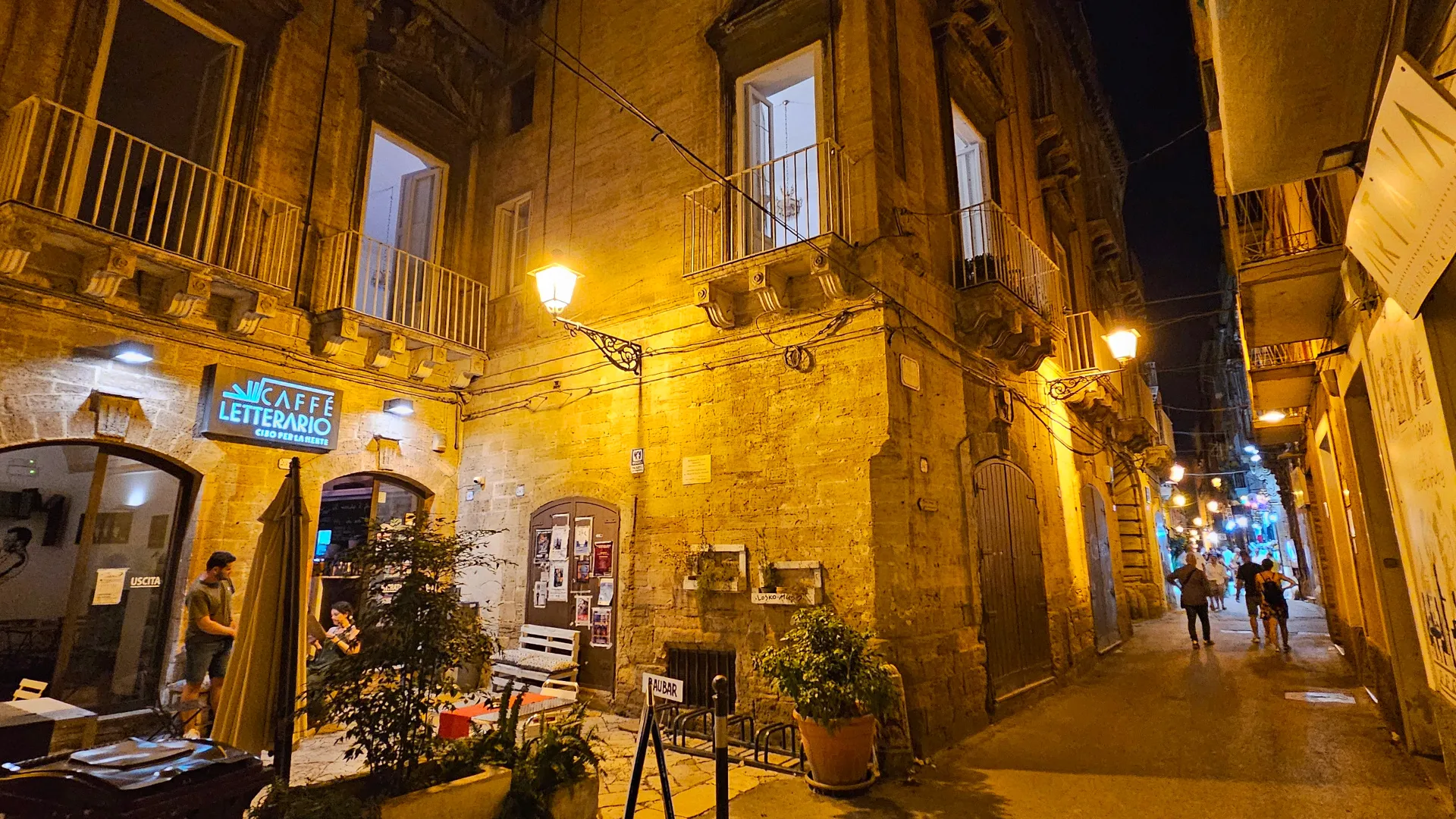
Taranto Vecchia is the historic part of the city of Taranto. This area is characterized by a labyrinth of narrow, winding streets that reflect its long history and architectural heritage.
Walking through the streets of Taranto Vecchia is like traveling back in time: the streets are lined with ancient buildings, many of which feature stone facades and architectural details that tell the story of the city.
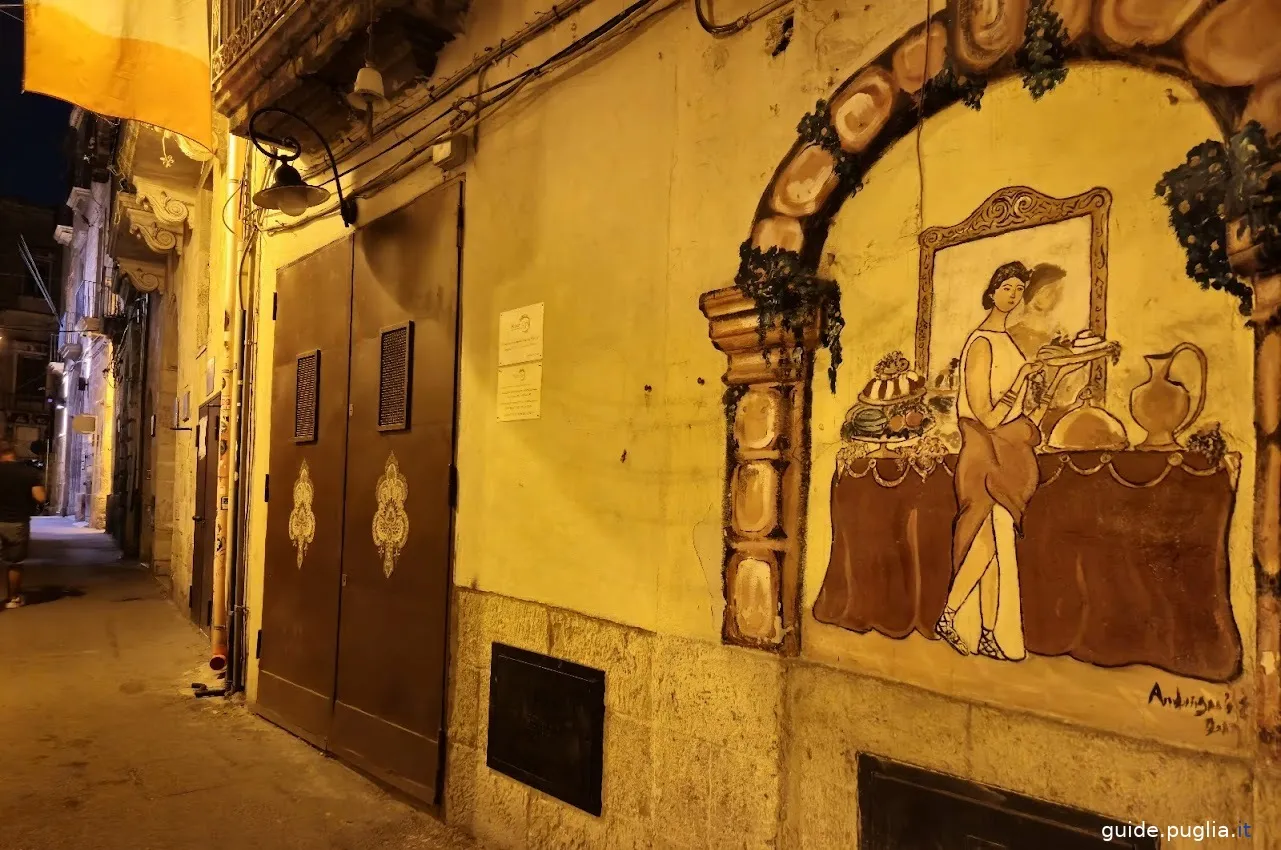
The mural streets are a distinctive feature of this area. They are often adorned with graffiti and murals that reflect contemporary art and local culture, creating a fascinating contrast with the ancient urban fabric.
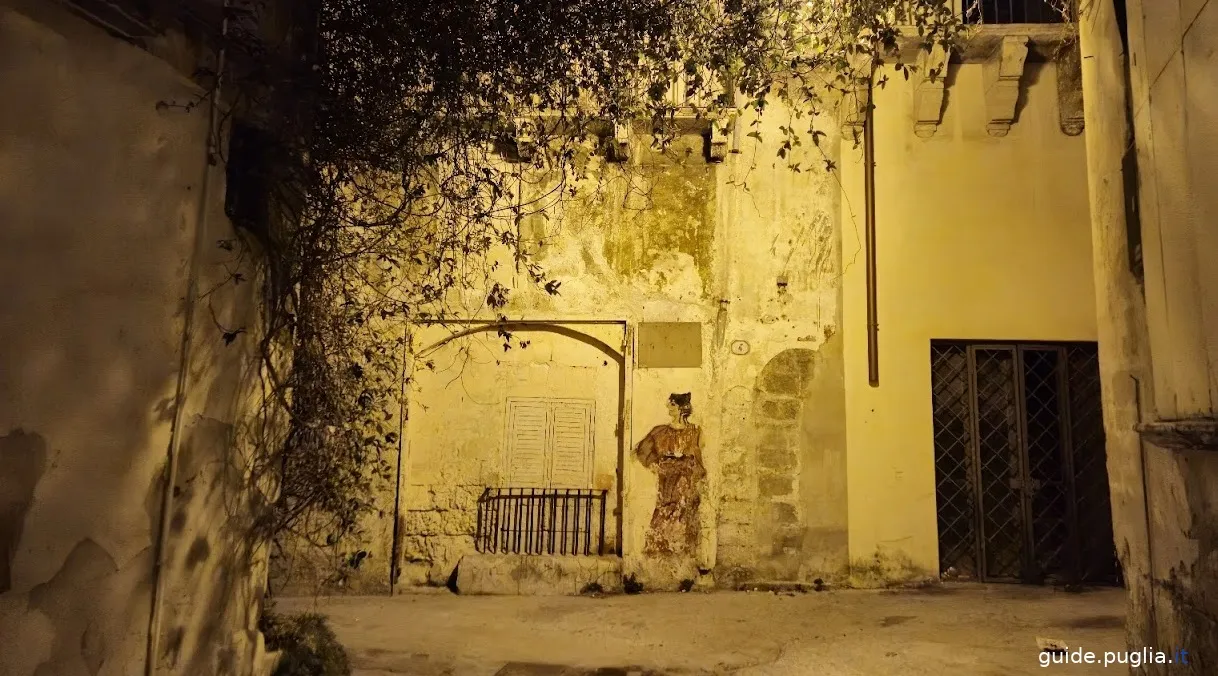
These murals can range from artistic representations to social messages, adding a lively and modern touch to the historical context.
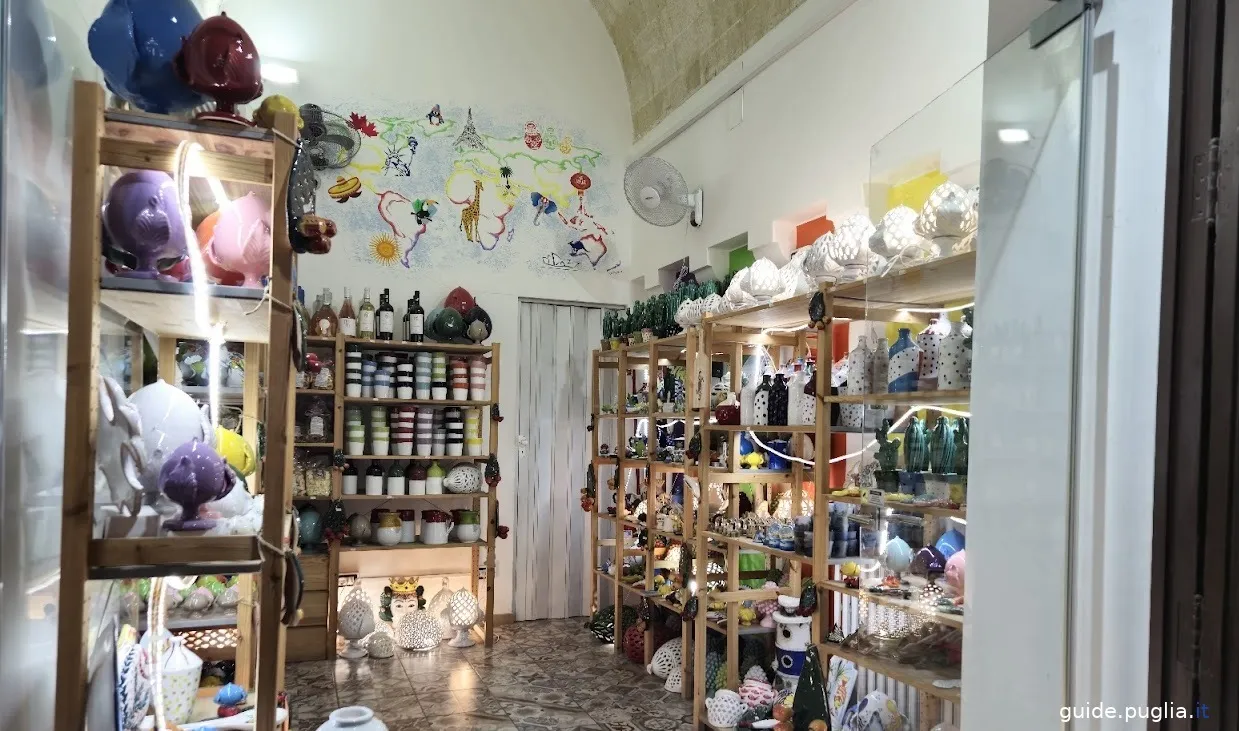
In Taranto Vecchia, you can also find numerous souvenir shops offering a wide range of items typical of Puglia and the city itself. These shops sell products such as handcrafted ceramics, local food items (like olive oil and taralli), and souvenirs that celebrate the Tarantine culture and traditions.
As you stroll through these streets, you will also have the chance to discover small workshops and craft shops that produce and sell handmade items, offering an authentic and unique experience.
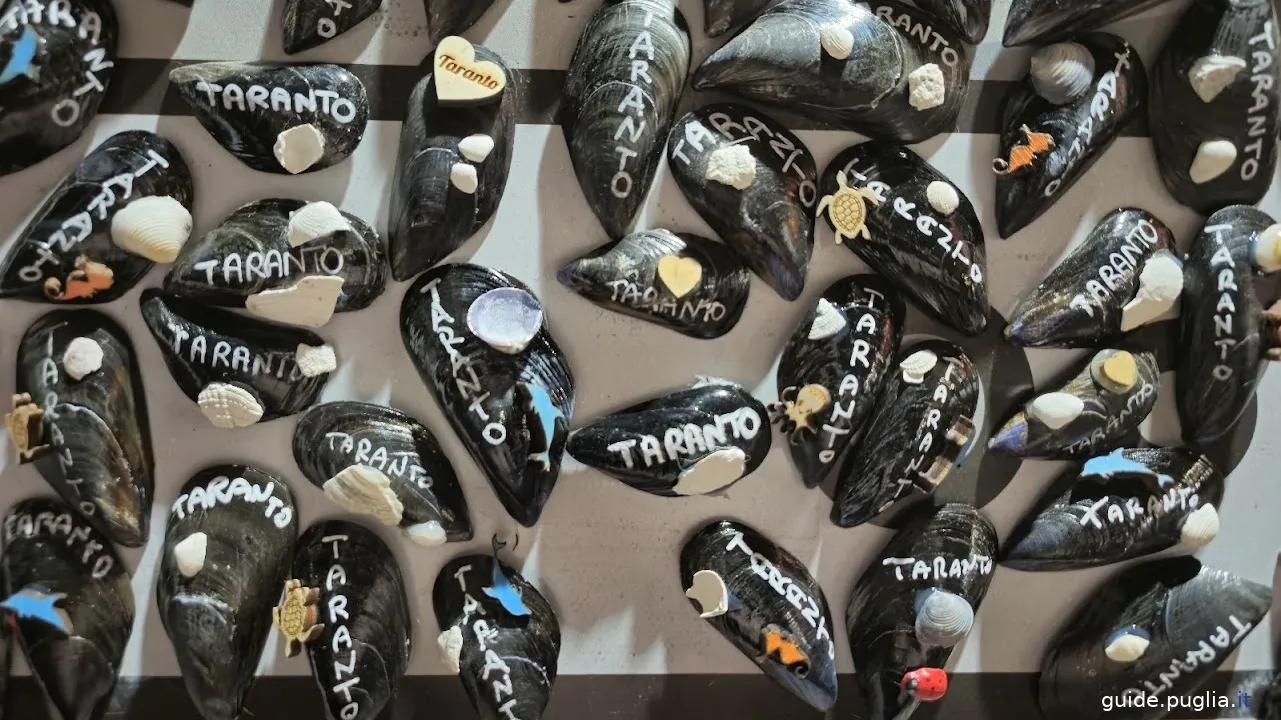
The area is also rich in historic monuments and churches, such as the Cathedral of San Cataldo and the Aragonese Castle, which add further charm and historical significance to the neighborhood.
Church of Saint Paschal Baylón
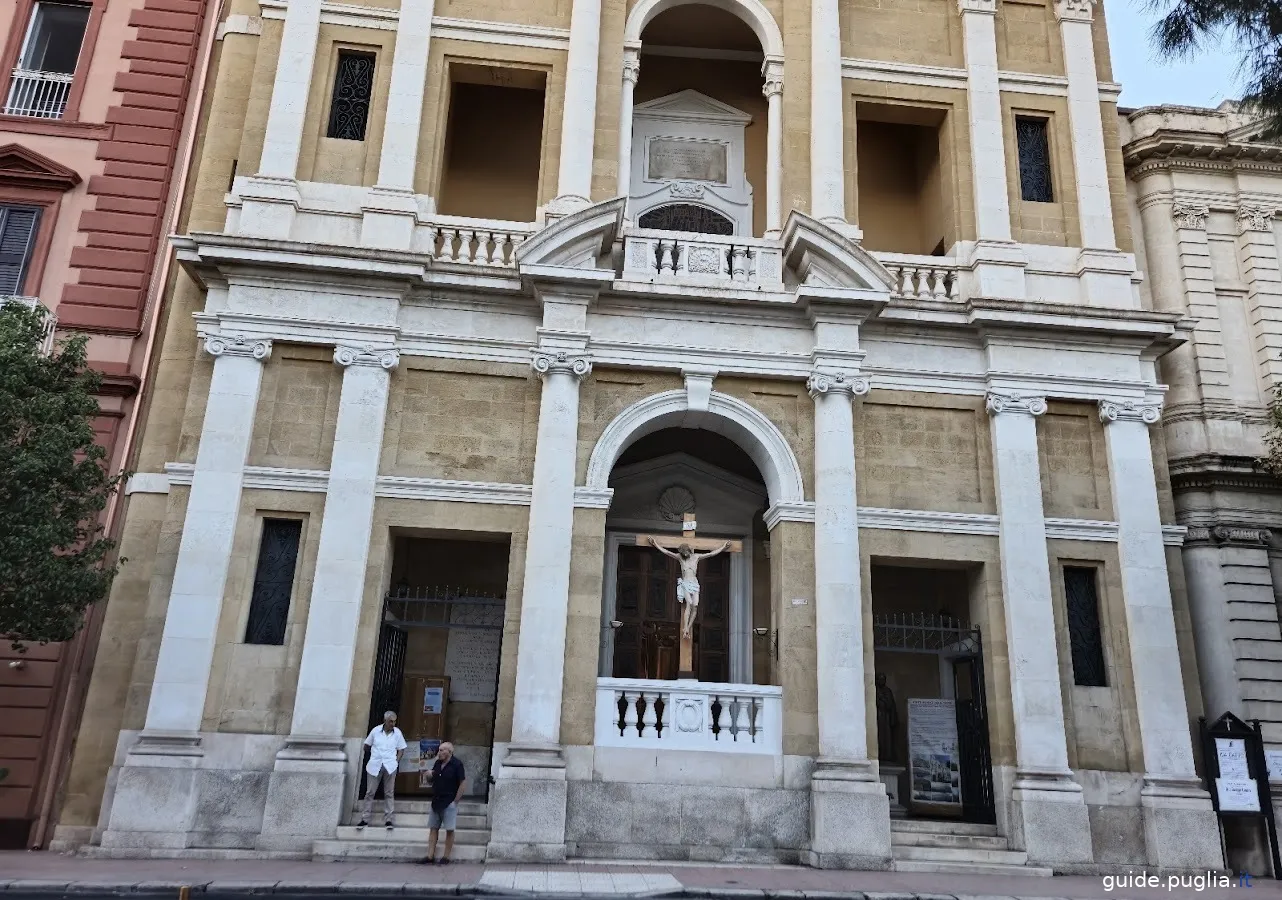
Located in the center of the Ubertino district, just before the Ponte Girevole, this ancient church is entrusted to the Franciscan friars. Architecturally charming and welcoming, the church houses a pinacotheca in its former sacristy, featuring 17th-century artworks by local artists from the Neapolitan school, influenced by Caravaggio.
In addition to the main altar, topped with a canvas depicting the ecstasy of Saint Paschal, the side chapels are also worth visiting. Historically, this church holds the relics of Saint Egidio, an Alcantarine saint originally from Taranto.
Church of Saint Michael the Archangel
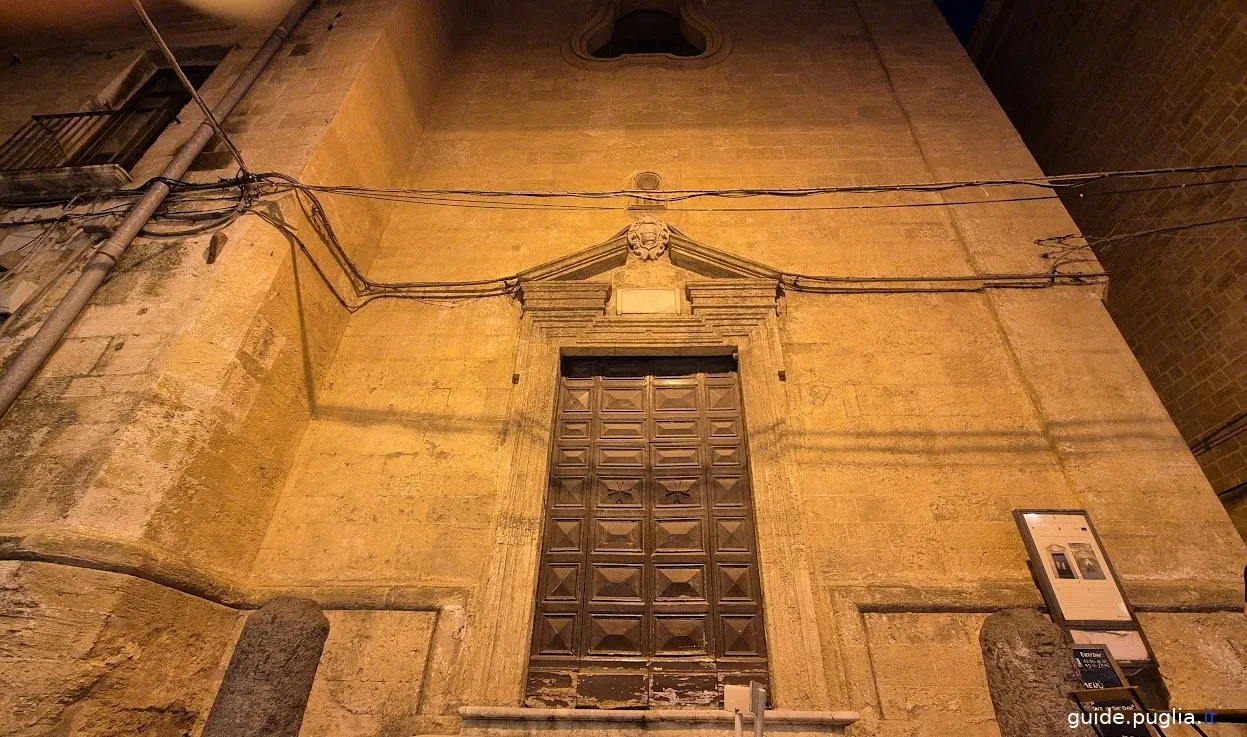
A short distance from the Ponte Girevole and the Aragonese Castle of Taranto, along Via Duomo (the street that crosses the historic center of the city), stands this ancient church, currently managed by the Order of Malta.
The main altar features a statue of the Immaculate Conception, co-patron of Taranto along with Saint Cataldo. The structure dates back to the 18th century, and the adjoining convent was originally intended to accommodate various Franciscan religious communities. Today, the convent houses the Provincial Conservatory "Giovanni Paisiello".
Ponte di Pietra (or Bridge of Saint Egidio of Taranto)
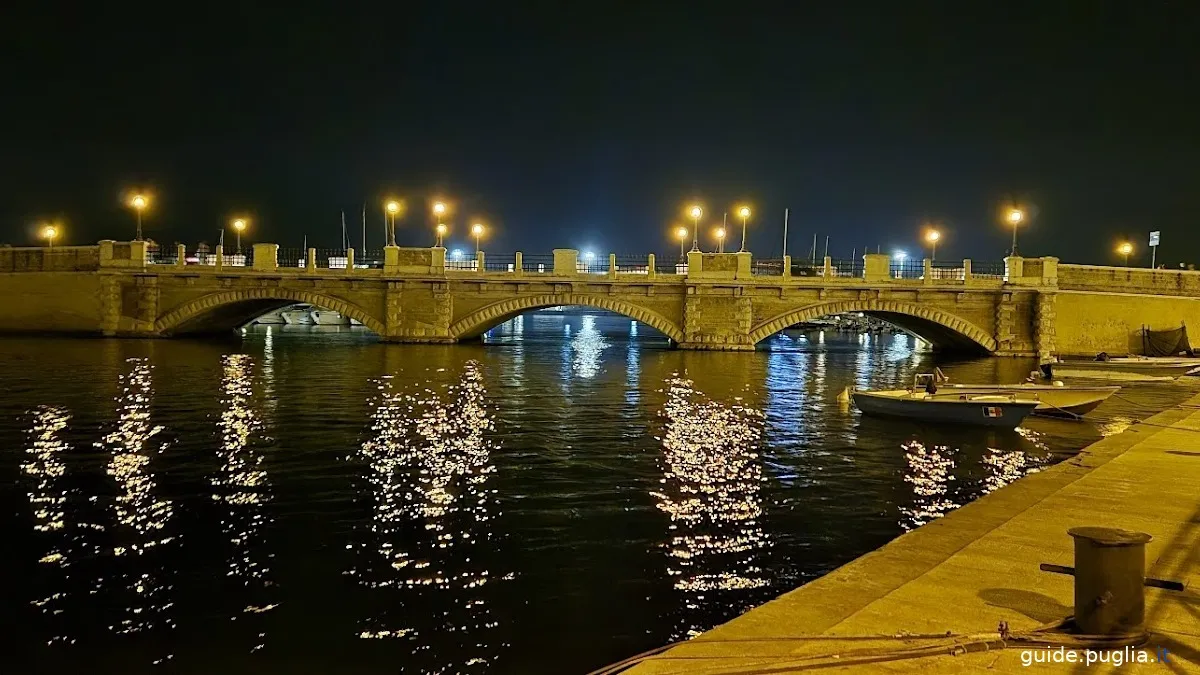
The Ponte di Pietra spans the point where the waters of the Mar Piccolo and the Mar Grande meet. It is dedicated to Saint Egidio of Taranto, a devoted follower of the Franciscan rule. Composed of three arches and measuring 115 meters in length, this remarkable bridge was completed in 1883, following the destruction of a previous seven-arched bridge built by Nicephorus II Phocas in the 10th century.
An immense flood, which raised the sea by about three meters and inundated the old city’s homes, caused the collapse of the bridge. After the flood, a temporary wooden bridge was constructed to connect the island to the mainland.
Its Venetian-style architecture makes it a must-see when visiting Taranto, especially at sunset. Nearby, visitors can board a ferry to San Pietro Island, a military base open to the public with an equipped beach, bar, showers, and crystal-clear waters.
Mar Piccolo and the Church of the Most Holy Madonna of Fatima
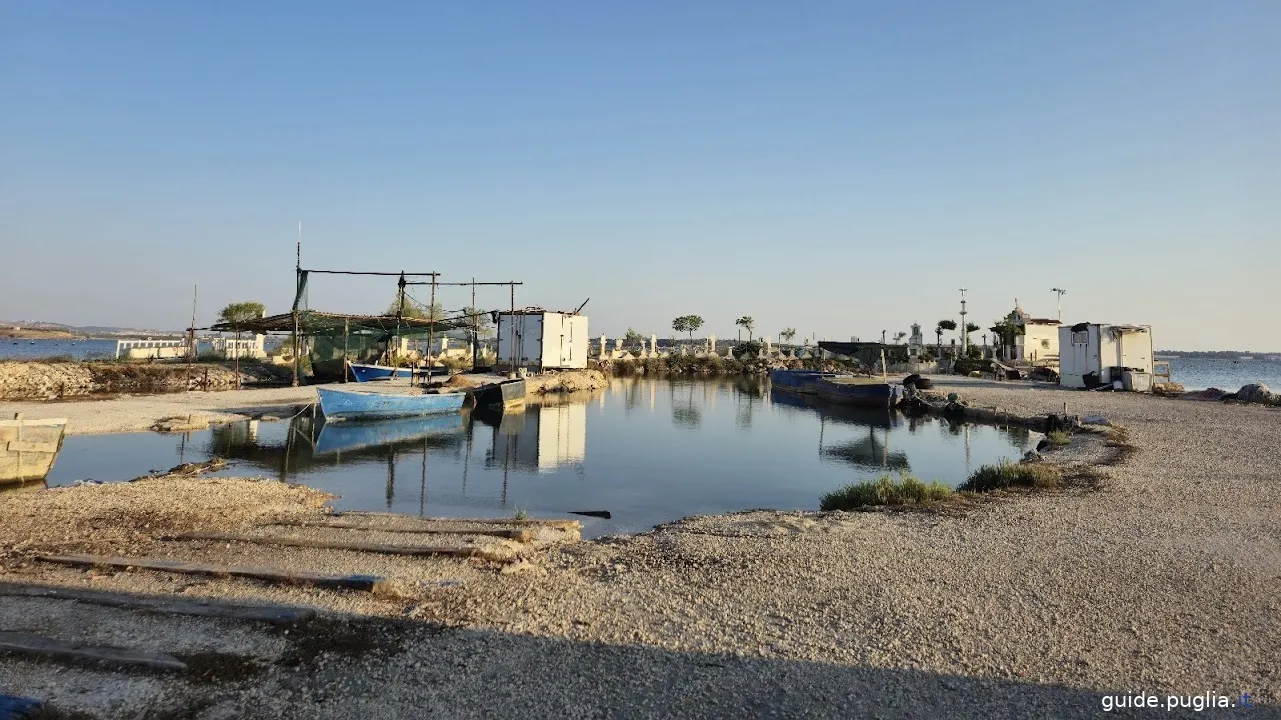
The small open-air chapel dedicated to the Most Holy Madonna of Fatima on the Mar Piccolo is a spiritual gathering place for those who live and make their living from the sea.
This is a work created by a very devoted citizen, with the aim of remembering the sailors who died at sea.
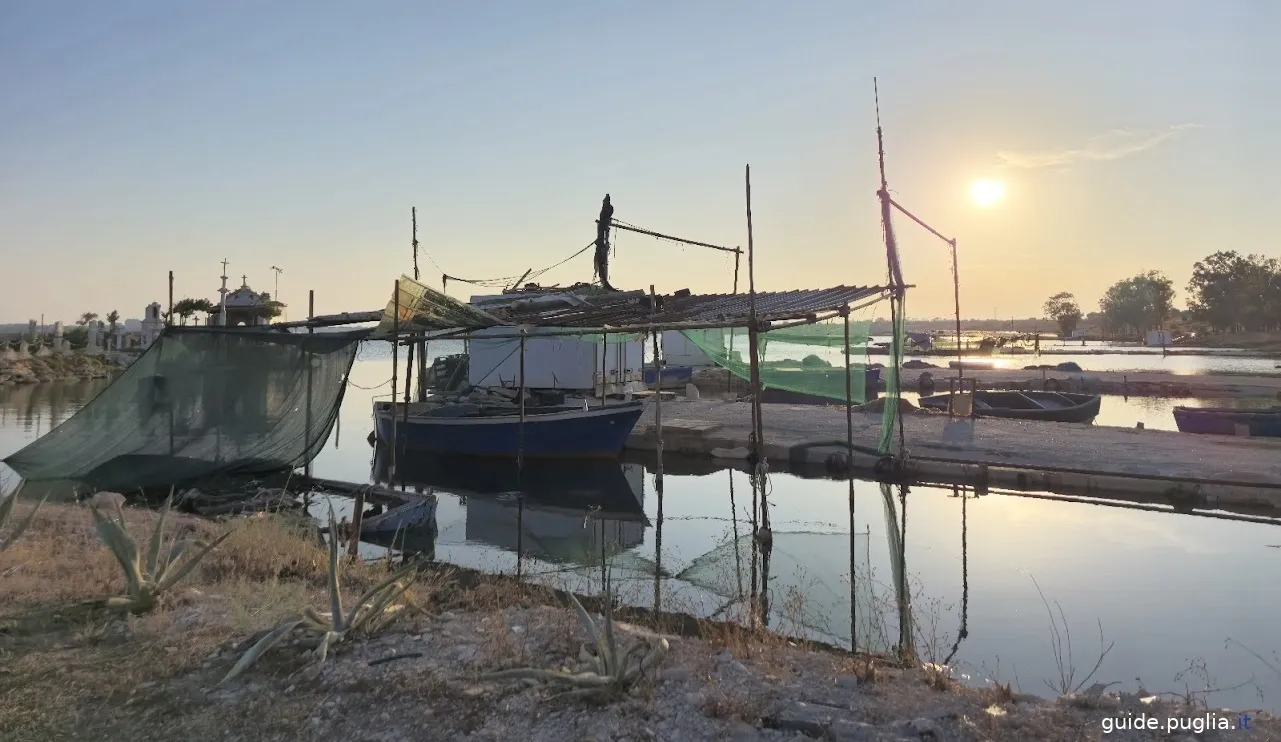
The chapel features a walkway along the rocks, among sun-bleached boats, where visitors come not only for devotion but also to breathe the refreshing salty air, view the famous "citri" (freshwater springs emerging from the underwater crust), admire the birdlife at the Oasi La Vela, see the mussel plantations up close, dive into the cool waters of the Cervaro River, and marvel at the beautiful city of Taranto in the distance.
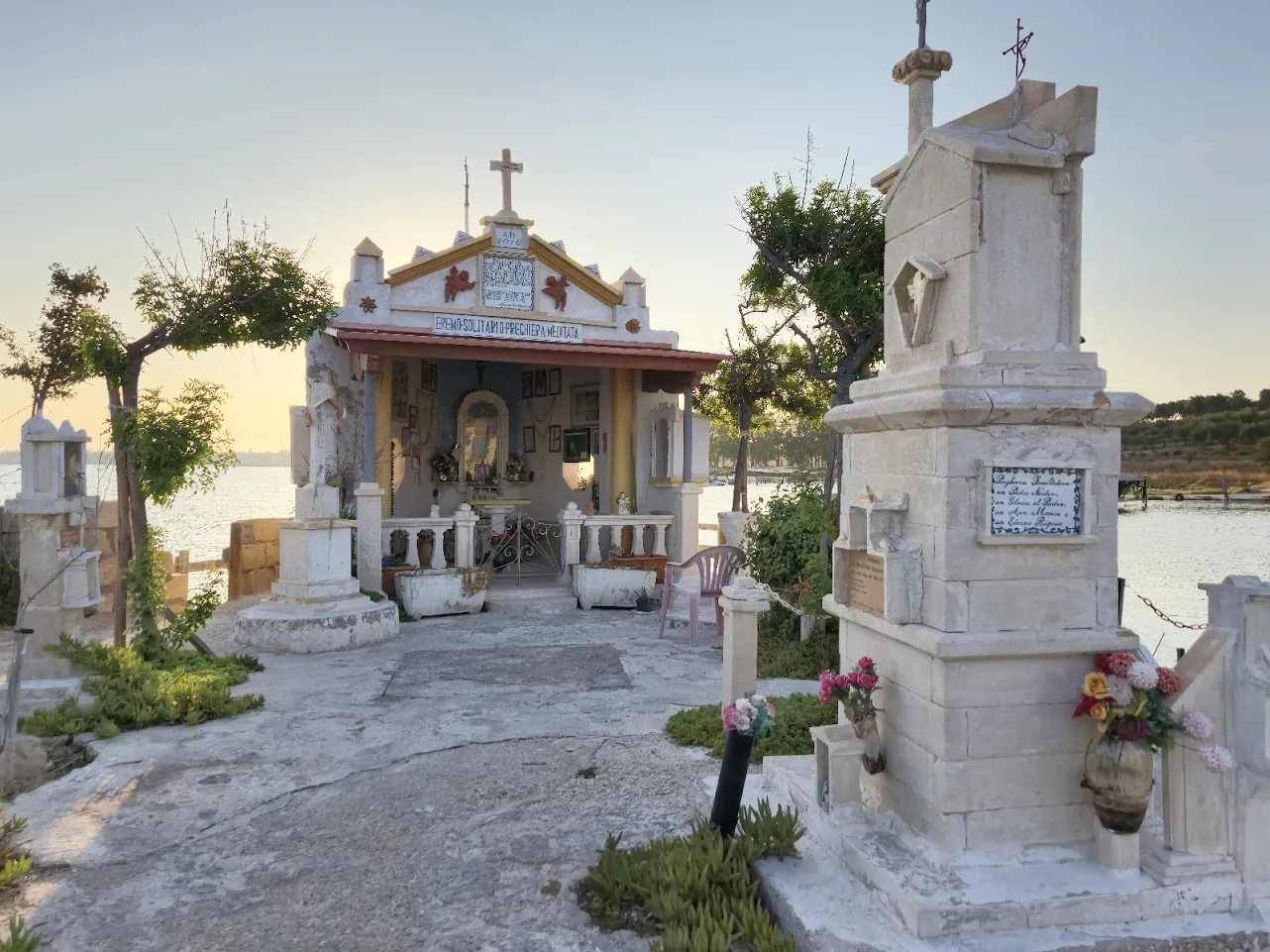
The Fatima Cathedral is an extraordinary creation by Ciro da Monteiasi, an eighty-year-old artisan devoted to the Madonna of Fatima. Despite his advanced age, Ciro dedicated his time and life to building this sacred place, demonstrating profound faith and relentless commitment.

Construction of the cathedral began several years ago and represents a significant spiritual and artistic achievement. Ciro worked meticulously, using traditional techniques and local materials. Every detail of the structure was carefully chosen, creating a space that conveys a sense of peace and contemplation.
Oasi La Vela
Oasi La Vela is a nature reserve located in Taranto, specifically in the Mar Piccolo area. Established as a Flora and Fauna Protection Oasis in 1991, it is an important environmental protection area offering valuable opportunities for observing local fauna and flora.
The oasis is characterized by its wetland and brackish environments, with vegetation typical of coastal zones. The pink flamingos (Phoenicopterus roseus) are among the species that visit the area, especially during their migrations in spring and autumn.
Oasi La Vela, with its Mar Piccolo waters and wetlands, provides an ideal habitat for these birds.
What to do nearby
Things to Do in Taranto: Beaches, Experiences, Events
Taranto offers a range of wonders: from beautiful beaches for relaxation, to local events and festivals that animate the city, to culinary experiences that will make you fall in love with the flavors of Apulia.
Local Events and Festivals
Taranto is a vibrant city that hosts numerous events and festivals throughout the year. These events celebrate local culture, religious traditions, and the city's rich history.
- Holy Week: The Holy Week processions in Taranto are among the most impressive in Italy. Local brotherhoods parade through the streets in traditional attire, creating a solemn and fascinating atmosphere.
- Feast of San Cataldo: Celebrated on May 10th, this feast is dedicated to the city's patron saint. It includes processions, religious events, and fireworks.
- MediTa Festival: A music and arts festival held in the summer, attracting national and international artists for concerts, theatrical performances, and artistic shows.
- Boat Tours: Explore the Mar Piccolo and Mar Grande with a boat tour. These tours offer the opportunity to see the city from a unique perspective and visit small islands and surrounding natural areas.
- Guided Tours: Participate in guided tours of the old city, discovering historical alleys, ancient churches, and noble palaces. Local guides offer thematic tours that include archaeology, military history, and art.
- Swinging Bridge: Witness the opening of the Swinging Bridge, a fascinating event that allows the passage of military ships. This bridge connects the island of the old city with the new borough and is a symbol of Taranto.
- Culinary Tours: Join a culinary tour to discover the authentic flavors of Tarantine cuisine. These tours often include visits to local markets, tastings of typical products, and meals in traditional restaurants.
Visiting the Best Beaches in Taranto:
- San Pietro in Bevagna Beach: Located about 40 kilometers from Taranto, this beach is famous for its white sand dunes and clear waters. It is ideal for those seeking tranquility and natural beauty.
- Marina di Pulsano: Known for its fine sand coves and turquoise waters. It is one of the most popular seaside destinations in the province of Taranto.
- Marina di Lizzano: This beach offers a long stretch of white sand and clear waters, perfect for those looking for tranquility and an unspoiled natural environment.
- Campomarino di Maruggio: Campomarino is a much-loved seaside resort, with fine sandy beaches and crystal-clear sea. The area is also known for its dunes and Mediterranean scrub.
- Lido Gandoli: This beach is very popular with Taranto residents due to its proximity to the city and its natural beauty. It is perfect for those looking for convenience and a lively environment.
- Castellaneta Marina: Nestled in a lush pine forest, this seaside resort offers wide sandy beaches and clear water. It is perfect for those looking for a more natural and less crowded environment.
- Salina dei Monaci: Located near the Torre Colimena nature reserve, this beach is a place of rare beauty, characterized by sand dunes and an unspoiled natural environment.
What to See in the Province of Taranto?
The province of Taranto offers a wide range of cultural, historical, and natural attractions. Here is a selection of the most interesting places to visit in the province:
- Grottaglie: Known as the "City of Ceramics," Grottaglie is famous for its ancient artisanal traditions in ceramic making.
- Martina Franca: Located in the Itria Valley, Martina Franca is renowned for its Baroque architecture and famous music festival.
- Massafra: Known for its ravines (canyons) and rock churches, Massafra offers a unique experience in nature and history.
- Manduria: Famous for Primitivo wine, Manduria is a city with a rich history dating back to the Messapian era.

